With Google making over 5,000 algorithm updates each year, keeping up with SEO in 2025 is more challenging than ever. According to a recent BrightEdge study, 68% of all online experiences begin with a search engine, and SEO drives 1,000 %+ more traffic than organic social media. That means mastering modern SEO is essential.
In this guide, we’ll reveal 25 top techniques for SEO that will help you stay ahead of the curve, improve your search rankings, and unlock long-term organic growth. Whether you’re a beginner or a seasoned marketer, these insights will give you a competitive edge. Let’s get started.
Key Takeaways
|
What Are The Top Techniques For SEO In 2025?
In 2025, SEO is about speed, helpful content, and great user experience. To rank well, you need to apply the top techniques for SEO that match both user behavior and Google’s expectations. Here are the most important techniques to focus on this year:
- Create helpful, in-depth content
- Improve website speed and mobile responsiveness
- Prioritize user experience (UX)
- Understand and use AI effectively
- Answer user questions clearly
- Build high-quality backlinks
Want to know how to apply these techniques and get real results? Keep reading for a detailed breakdown of how to implement these top SEO techniques in 2025. Let’s explore each technique one by one.
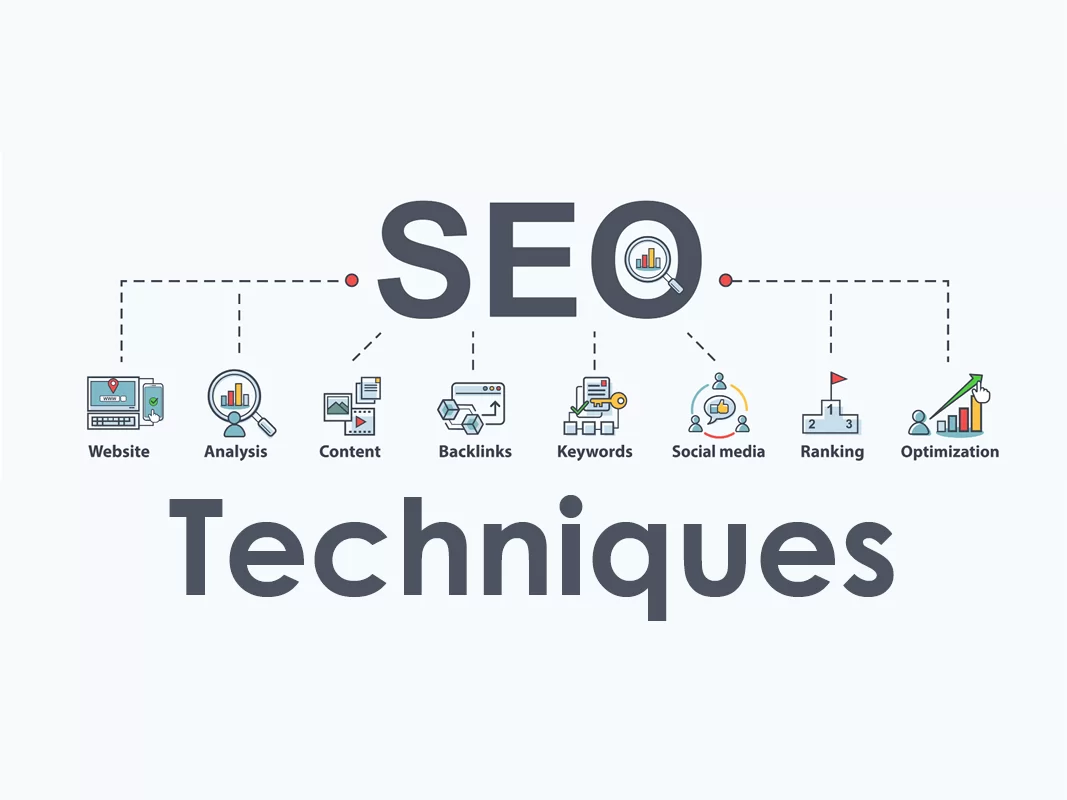
Planning the top techniques for SEO must meet user needs and Google’s standards
Top 25 Best Practices To Improve Your SEO Rankings
Want to boost your rankings and get more traffic? Apply the top techniques for SEO that are working in 2025. Discover the top 25 essential SEO strategies you should follow.
|
1. Emulate top-performing pages
Looking at what already works is one of the fastest ways to succeed in SEO. Instead of starting from scratch, study the top-ranking pages in your niche.
- Use SEO tools: Use tools like SEMrush, Ahrefs, or Ubersuggest to find top pages in your topic. It analyzes their structure, keywords, and content depth.
- Identify patterns: Look for recurring themes or formats. Are they using long-form content, infographics, or videos? Understanding these patterns can inform your content creation strategy.
- Create superior content: Once you’ve identified successful elements, aim to create content that offers more value. This could mean providing more in-depth information, updating outdated data, or presenting content in a more engaging format.
By applying the top techniques for SEO and improving what already works, you position your content to outperform top-ranking pages.
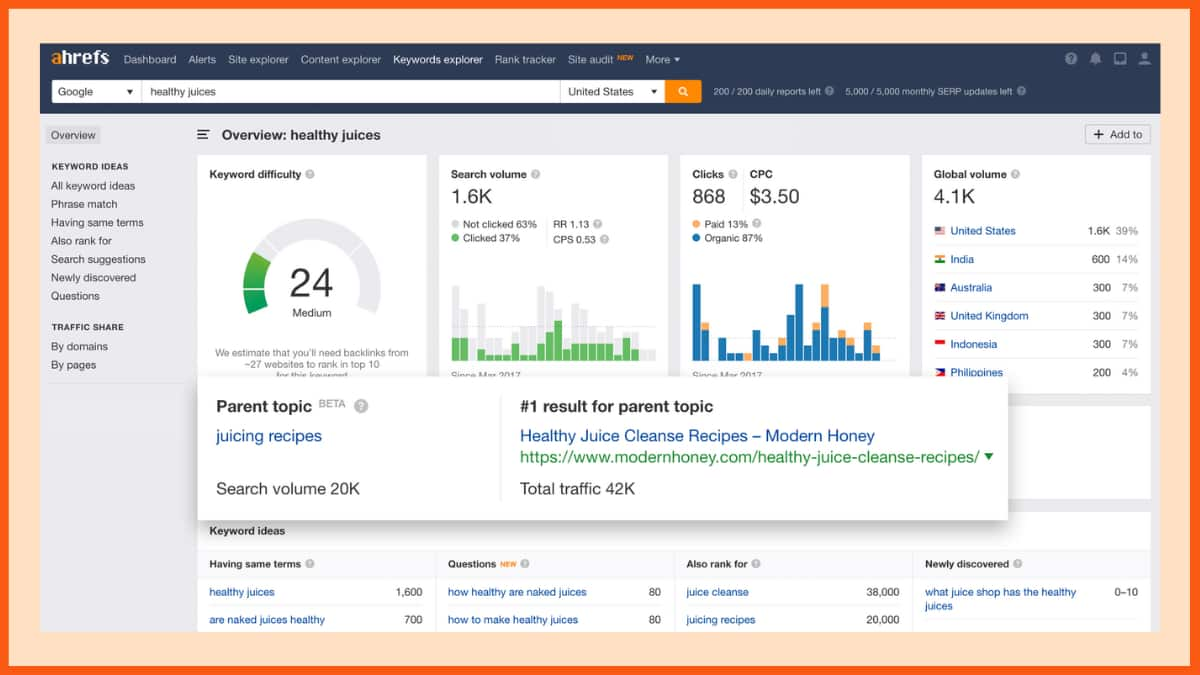
Analyzing top-performing pages creates better content
2. Spy on competitors’ content
Keeping an eye on your competitors’ content strategies can reveal gaps and opportunities in your approach.
- Monitor content topics: Use Ahrefs’ Content Gap or Semrush’s Content Analyzer to compare your content with competitors’. Identify untapped topics and create high-quality content to fill those gaps.
- Analyze engagement metrics: Look at social shares, backlinks, and comments to gauge which pieces are resonating with audiences.
- Identify content gaps: Determine which topics your competitors haven’t covered thoroughly. These gaps present opportunities for you to provide valuable content that fills the void.
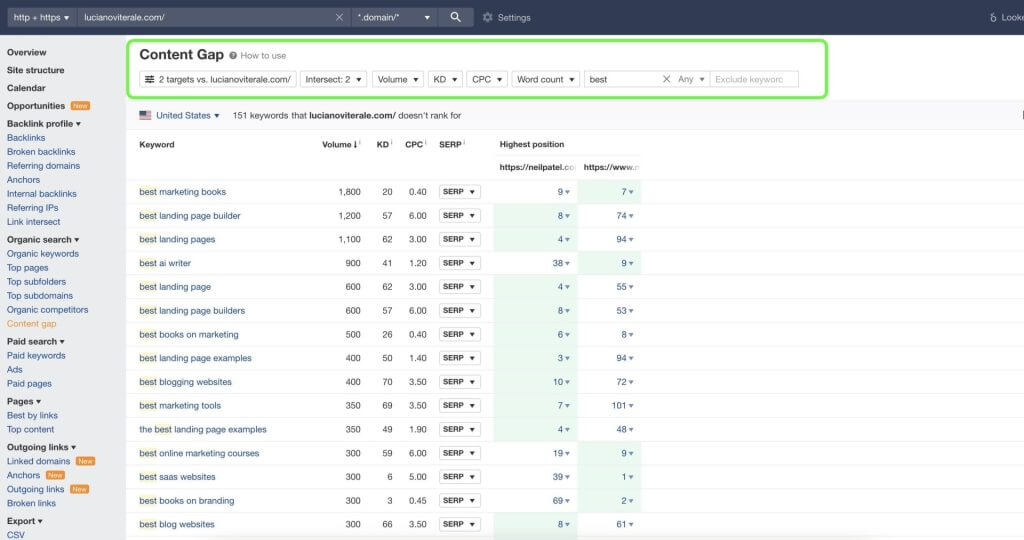
Regularly analyzing competitor content helps you stay updated on industry trends and adjust your strategy.
3. Target keywords your competitors are ranking for
Identifying and targeting keywords that your competitors rank for can help you capture a share of their traffic.
- Conduct keyword gap analysis: Use Ahrefs’ Keywords Explorer to compare your keywords with your competitors’ keywords. If they rank for “affordable web design,” optimize your pages for that keyword. Include it in titles, headings, and content naturally.
- Prioritize high-value keywords: Focus on keywords with high search volume and low competition. These present the best opportunities for quick wins.
- Optimize existing content: Incorporate these keywords into your current content where relevant. This can improve your rankings without the need to create entirely new content.
By using the top techniques for SEO to target competitor keywords, you can boost your visibility and attract more visitors.
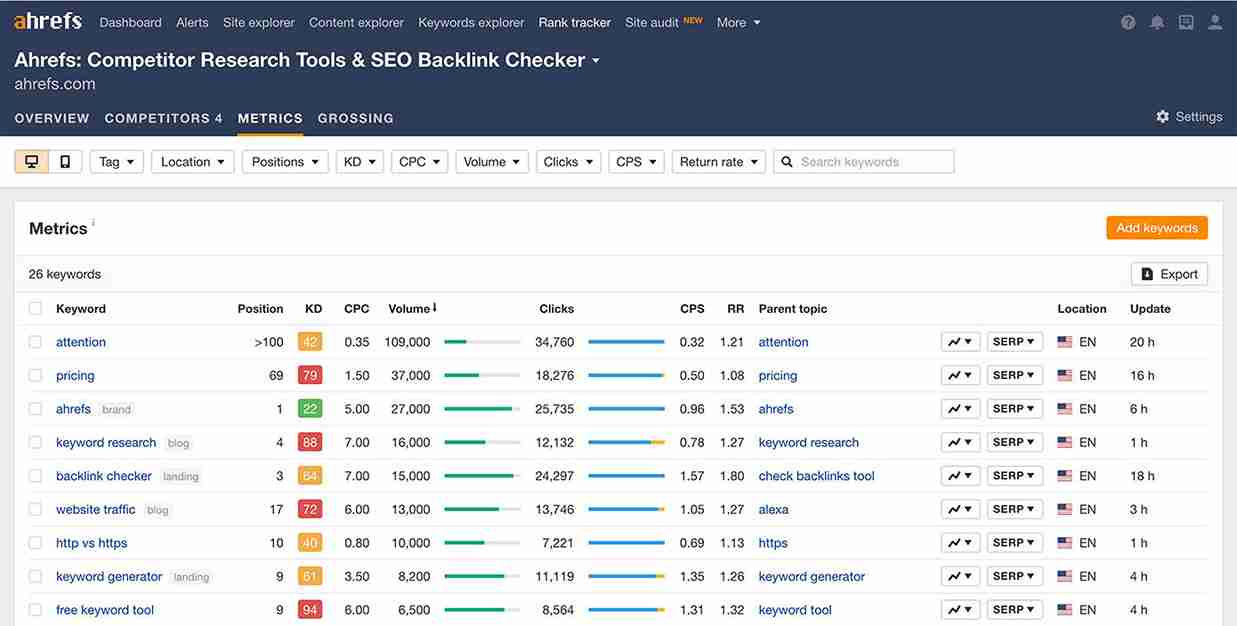
Targeting competitor keywords will increase visibility.
4. Find and ‘steal’ competitors’ broken backlinks.
One of the top techniques for SEO is finding broken backlinks from competitor sites and turning them into link opportunities. Use tools like Ahrefs to find these broken links, then create content that replaces or improves on the original.
Then, reach out to the websites linking to the broken pages and suggest your content as a better alternative. This method helps you build backlinks while helping other sites maintain their link quality.
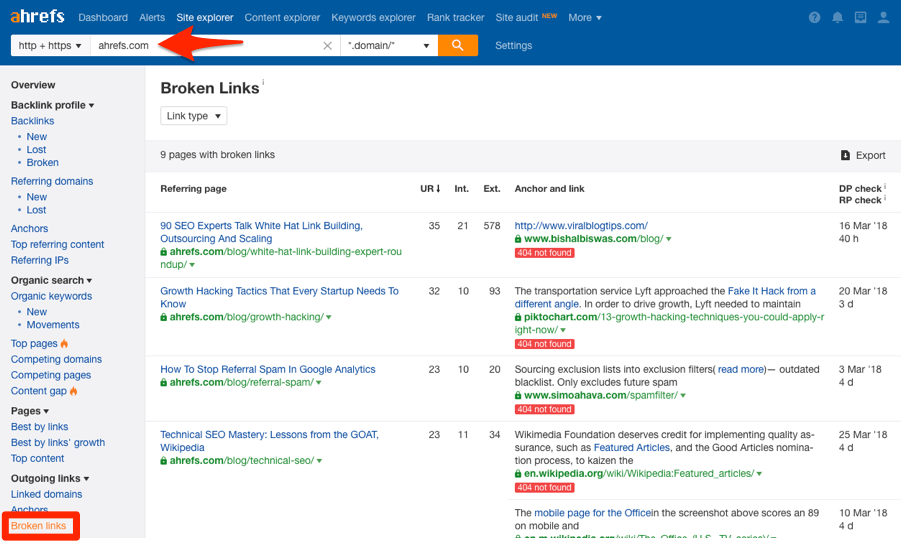
Find and ‘steal’ competitors’ broken backlinks on Ahref
| Read more: Outsource Backlink Building: 6 Steps to Get It Right |
5. Reclaim backlinks by fixing broken links
Check your website for broken links using tools like Screaming Frog or Google Search Console. Broken links can harm your SEO and waste good backlink opportunities. Fix them by redirecting to relevant pages or replacing them with new links. Also, re-check every few months to make sure everything’s still working. This keeps your site healthy and improves user experience.
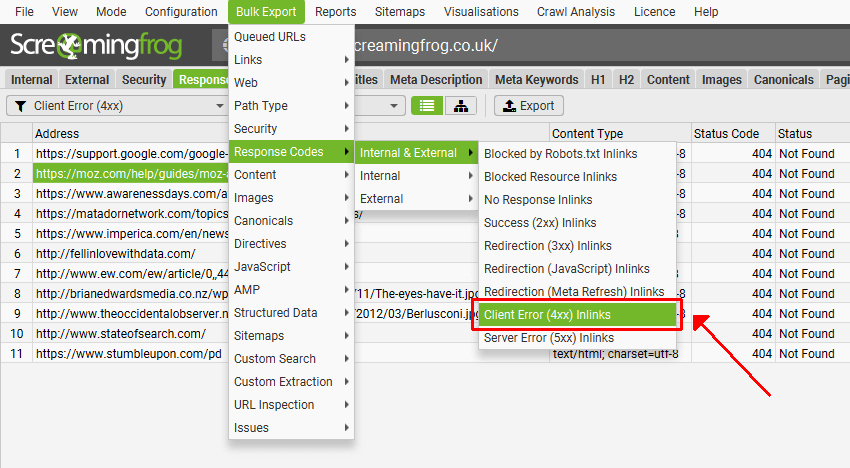
Check your website for broken links with Screaming Frog
6. Leverage internal links to boost important pages.
Internal linking also tells Google which pages are most important on your site. For example, link from a blog post to your product page. Use descriptive anchor text like “best SEO tools” instead of “click here.” This helps Google understand your site’s structure and boosts key pages.
7. Earn high-quality backlinks
High-quality backlinks are still one of Google’s top ranking factors in 2025. Therefore, you should focus on earning links from industry leaders. One link from a trusted site is better than 100 low-quality links.
You create valuable content, like in-depth guides or original tools that others want to link to. Then, reach out to relevant websites for backlinks and build strong relationships through guest posts or social media. According to Ahrefs, sites with more high-quality backlinks rank higher (Ahrefs, 2025).
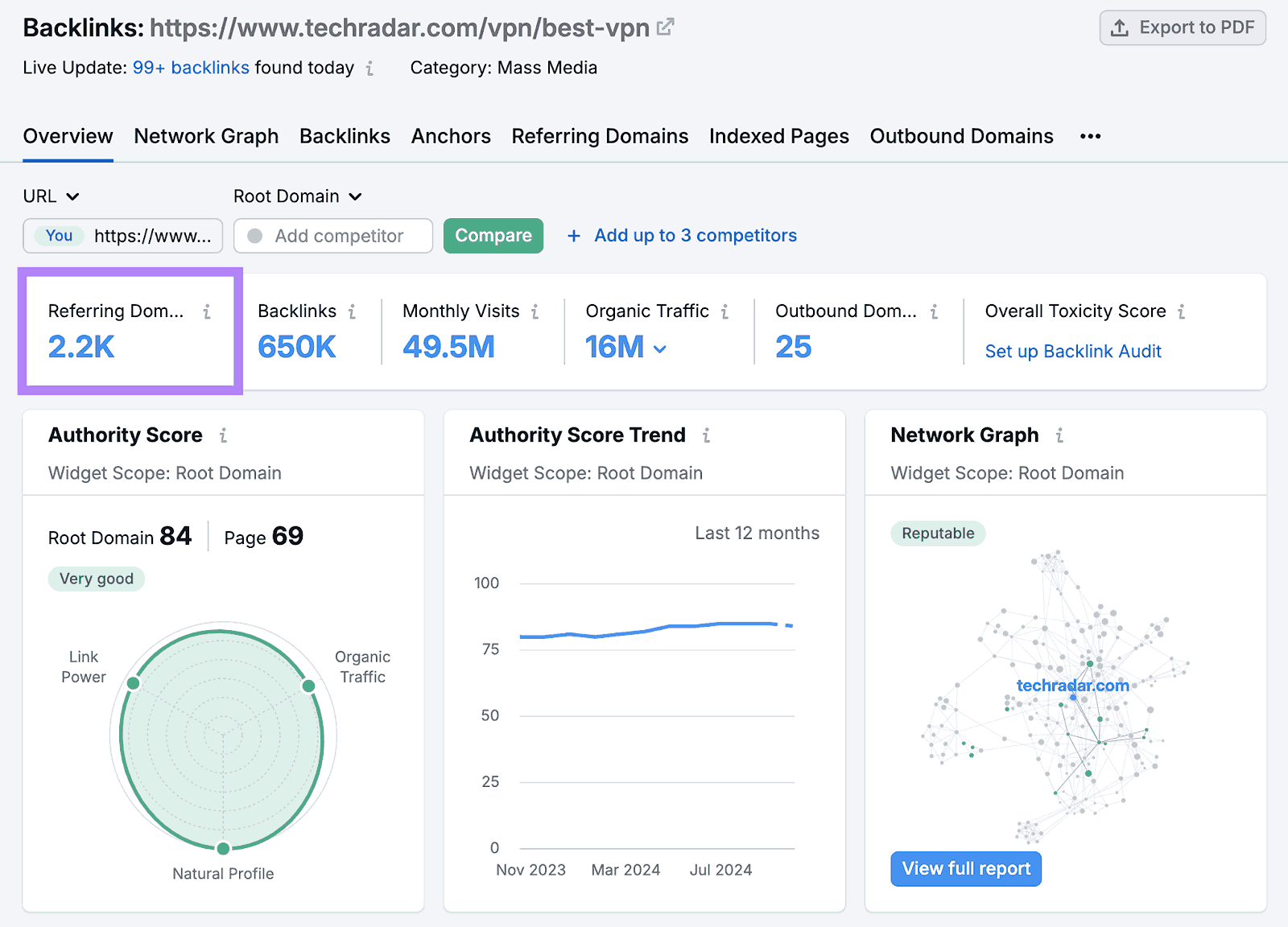
Find a piece of content in your industry that’s already performed well
In case you are thinking of building backlinks without a big budget, check our article: How to Build Backlinks Without Paying for Them? 9 Fast and Easy Methods
8. Use digital PR for backlinks
Digital PR is a mix of public relations and online marketing. It helps improve SEO and brand awareness. You can publish data-driven stories, respond to media inquiries through platforms, and create newsworthy campaigns that attract attention.
For example, getting featured on major U.S. outlets like Forbes, TechCrunch, The New York Times, or Business Insider can earn you high-authority backlinks and significantly boost your credibility. Then, use Google Alerts to find when your brand is mentioned. Ask for a backlink if someone mentions your site without linking. Digital PR gives you good backlinks and builds brand trust.

The Trump Organization builds powerful backlinks on Forbes magazine
9. Optimize for People Also Ask (PAA)
Google’s “People Also Ask” box is a great way to get more traffic if you answer the right questions. Use tools like AnswerThePublic or AlsoAsked to find common questions people search for. Then, write clear answers with structured H2 and H3 headers to organize your content. If your answer is clear and helpful, Google is more likely to feature it.
For example, if the keyword is “SEO for beginners”, a PAA question might be “What is the first step in SEO?” Create a section like: “H2: What is the first step in SEO?” Then, you can answer “The first step in SEO is conducting keyword research to understand what your audience is searching for. This helps you create relevant content that can rank higher in search engines.”
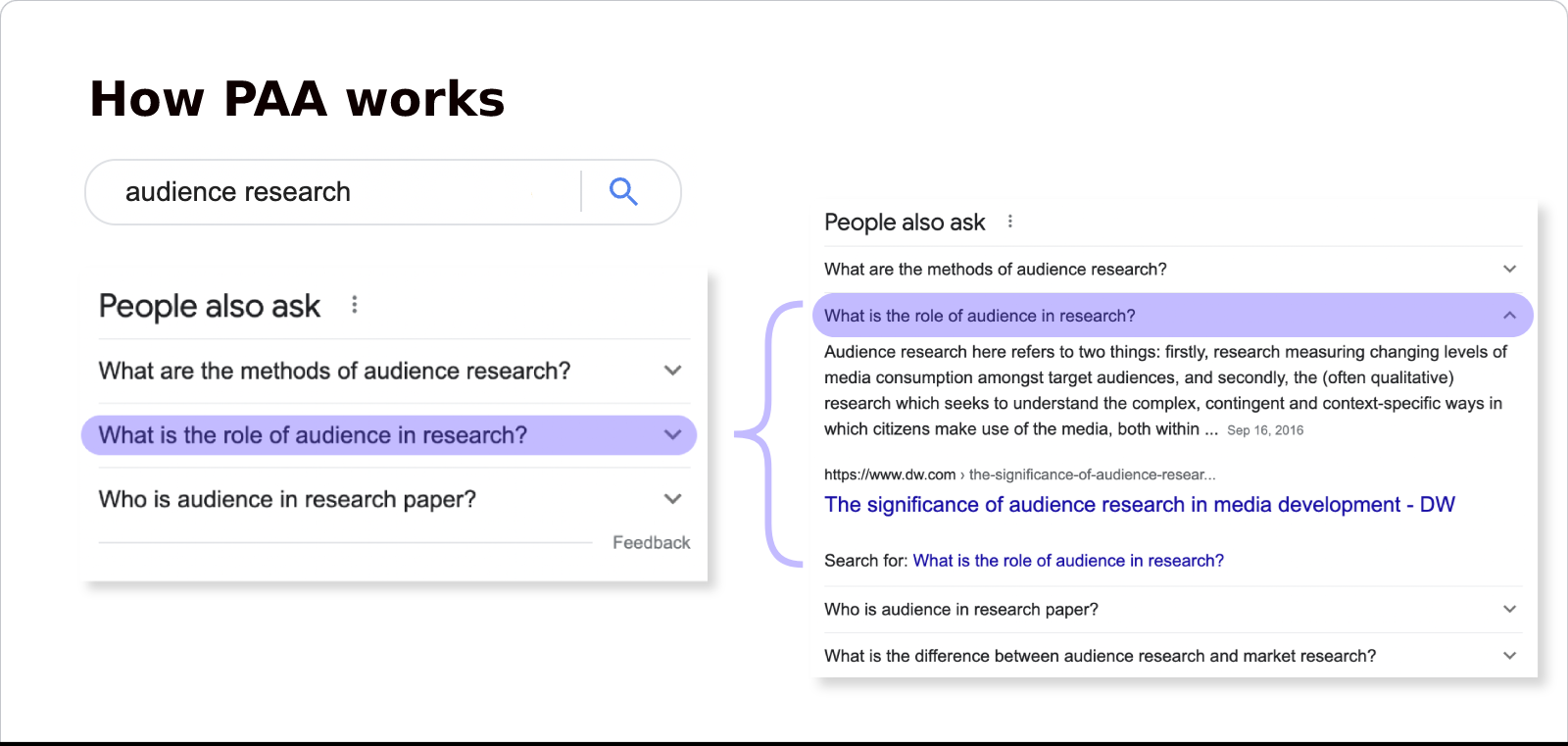
10. Win featured snippets
Featured snippets are short answers at the top of Google’s results. To target it, focus on questions like “how-to,” “what is,” or “best of.” Use short paragraphs, lists, or tables to format your answers. Adding schema markup later can also help Google understand your content better.
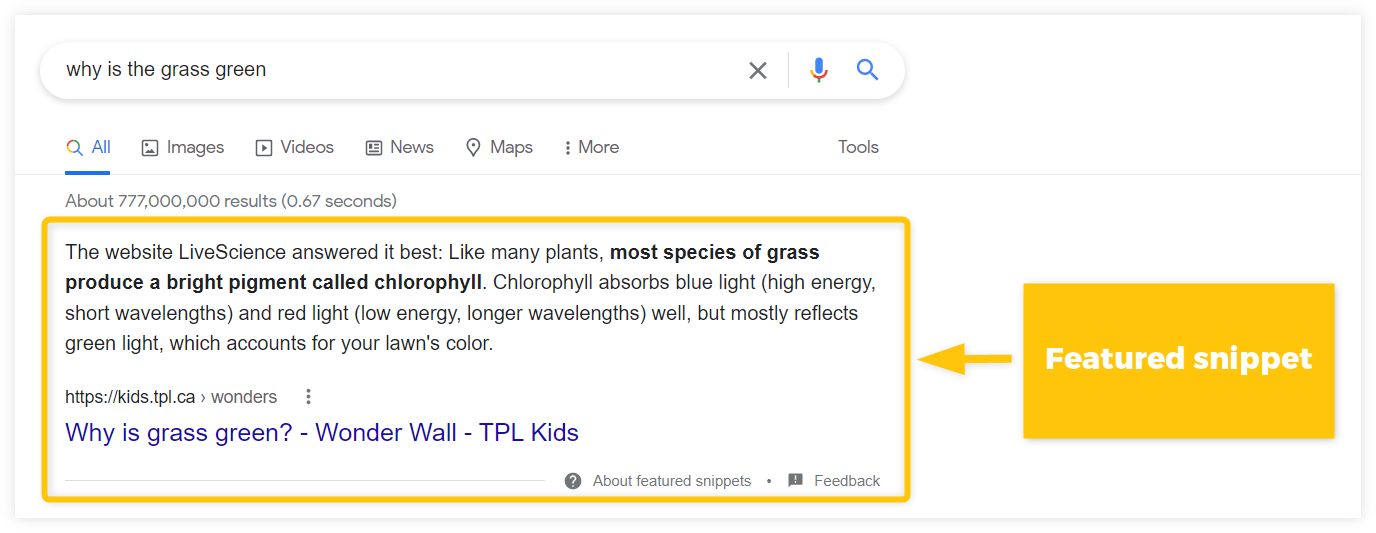
Clear, concise answers boost your chances of winning Google’s featured snippets in 2025.
11. Optimize for core web vitals.
In 2025, Core Web Vitals will remain key to better rankings, as they measure how users experience your site. Focus on fast loading (LCP under 2.5s), quick response times (FID under 100ms), and stable layouts (CLS under 0.1).
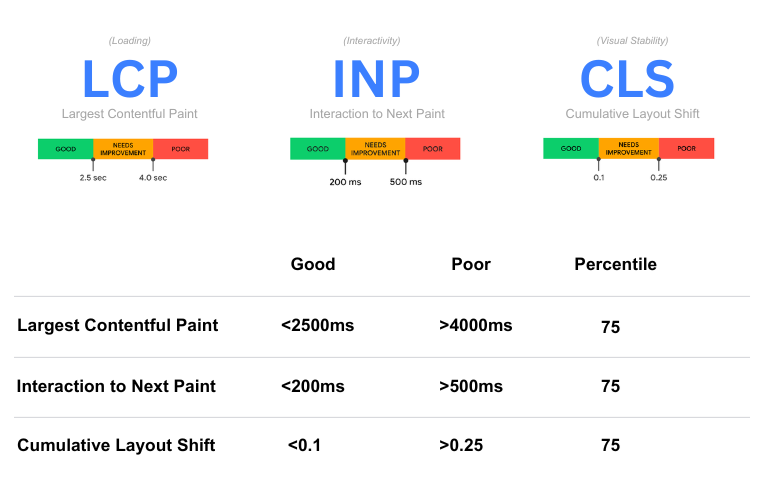
Improving Core Web Vitals like LCP, FID, and CLS ensures faster load times
You can check your Core Web Vitals using Google PageSpeed Insights or the Chrome Lighthouse tool to track your performance. These small improvements lead to lower bounce rates, better rankings, and happier visitors.
12. Improve page speed
Page speed is a big part of both SEO and user experience. According to Google, 53% of users leave a mobile site if it takes longer than 3 seconds to load. That’s traffic you can’t afford to lose.
- Improve hosting and infrastructure: Use fast, reliable hosting and a content delivery network (CDN) to reduce load times.
- Optimize images and code: Compress images, minify CSS/JS, and avoid excessive third-party scripts that slow down the site.
- Use Google tools: Tools like PageSpeed Insights and Google Search Console provide specific Core Web Vitals reports and optimization tips.

PageSpeed Insights provides specific Core Web Vitals reports and optimization tips.
13. Create thorough content
Thorough content reduces bounce rates, increases dwell time, and signals to Google that your page is a valuable resource. Instead of creating 10 short articles, focus on one long, detailed guide.
- Do topic research: Use keyword tools, AI Overviews, and “People Also Ask” boxes to find every angle of a topic.
- Use clear headers and subheaders: Break your article into logical sections using H2s and H3s.
- Add examples and data: Real-world examples and numbers make your content more trustworthy and engaging.
- Include FAQs: Address common questions to keep readers on the page longer and boost keyword reach.
For example, instead of a 500-word blog post on “SEO tips,” write a 2,000-word guide covering strategies, tools, and examples. By focusing on thorough content, you align with the top techniques for SEO that prioritize user satisfaction and search engine visibility.
14. Create content hubs to become an authority
A content hub is a main page that links to several related articles, showing Google your expertise. For example, create a hub about “SEO strategies” with blogs on SEO, PPC, and social media. Link the hub to each article and make sure they link back to the hub. This setup improves navigation, keeps users on your site longer, and can boost your rankings.
15. Use AI in your content creation process
AI tools are becoming indispensable for SEO writers and marketers. Tools like ChatGPT and Grok can help brainstorm article topics, titles, and outlines based on trending keywords. Many tools offer built-in grammar checks, keyword suggestions, and readability improvements.
However, AI should support your work, not replace it. Add your voice, real-life experience, and a human touch to make your content stand out. Used wisely, AI can be a powerful tool to speed up and scale your content strategy effectively.

Use GPT to enhance your content creation process
16. Refresh old content to stay relevant
Content that once ranked well can lose visibility over time if it becomes outdated.
- Audit existing content: Use Google Search Console or analytics tools to identify posts that have lost traffic or rankings.
- Update statistics and examples: Replace old data with recent studies or reports. For example, SEO tools release new features every year.
- Add new sections or remove outdated ones: Expand on what’s missing or eliminate no-longer-relevant parts.
- Improve SEO elements: Reoptimize meta descriptions, headers, internal links, and keywords to align with current SEO best practices.
Refreshing content is quicker than creating new posts and can restore high rankings with minimal effort. According to HubSpot, updating old blog content increased their organic traffic by over 106%.
17. Add schema markup to your website
Schema markup is a type of code that helps search engines better understand your content. It can give you rich results like star ratings, FAQs, or event dates. For WordPress users, plugins like Rank Math or Schema Pro simplify the process.
You can also add an FAQ schema, use JSON-LD format, to make your questions appear directly in search results. In addition, you use Google’s Rich Results Test or Schema Markup Validator to check if everything is implemented correctly.
18. Optimize for image SEO
As one of the top techniques for SEO, optimizing images also helps attract users via Google Image Search.
- Use descriptive file names: Rename image files with relevant keywords before uploading (e.g., “seo-strategy-2025.png”).
- Choose the right format: Use WebP or compressed JPEG/PNG files to maintain quality while reducing file size.
- Host images smartly: Avoid hotlinking or slow-loading external sources; serve images from your fast server or CDN.
- Use structured data: Structured data helps Google better understand the content of a webpage, making it eligible for rich results. For products, leverage structured data for SEO to help Google better understand your content and improve your search result appearance.
19. Add alt text to images
Alt text boosts both accessibility and SEO when used correctly. Describe the image clearly and keep it short and specific. Add keywords only when they fit naturally, and avoid repeating nearby text. This helps screen readers and can improve your site’s visibility in search results.
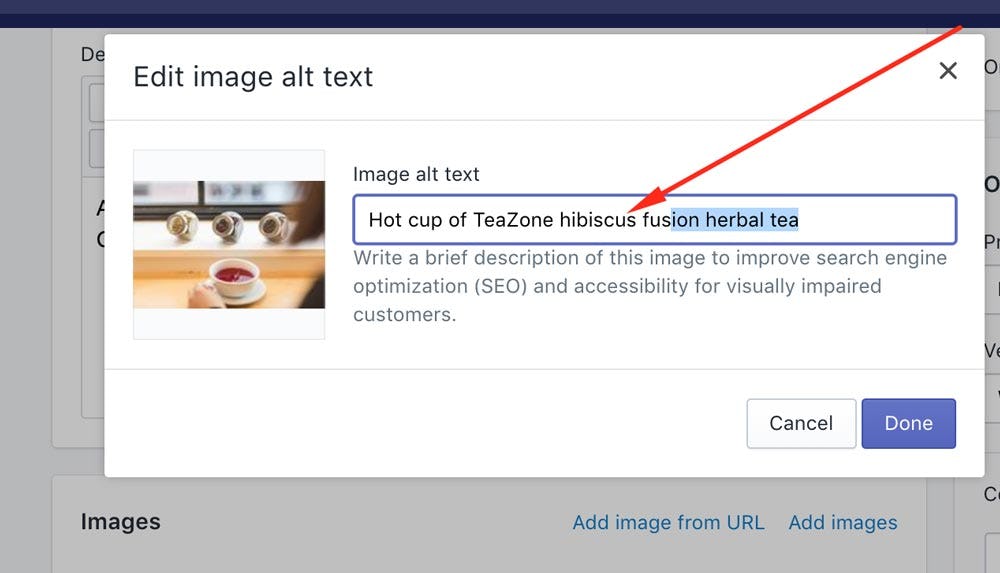
Adding alt text improves accessibility, aligning with the top techniques for SEO
20. Add long-tail keywords
Long-tail keywords are longer, more specific keyword phrases that are easier to rank for and often have higher conversion rates.
- Identify user intent: Think about the exact phrases users would type when they are ready to take action (e.g., “best SEO tools for bloggers”).
- Use keyword research tools: SEMrush, Ahrefs, and Ubersuggest can help uncover long-tail keyword opportunities.
- Incorporate naturally: Include long-tail phrases in titles, subheadings, and throughout your content where they make sense.
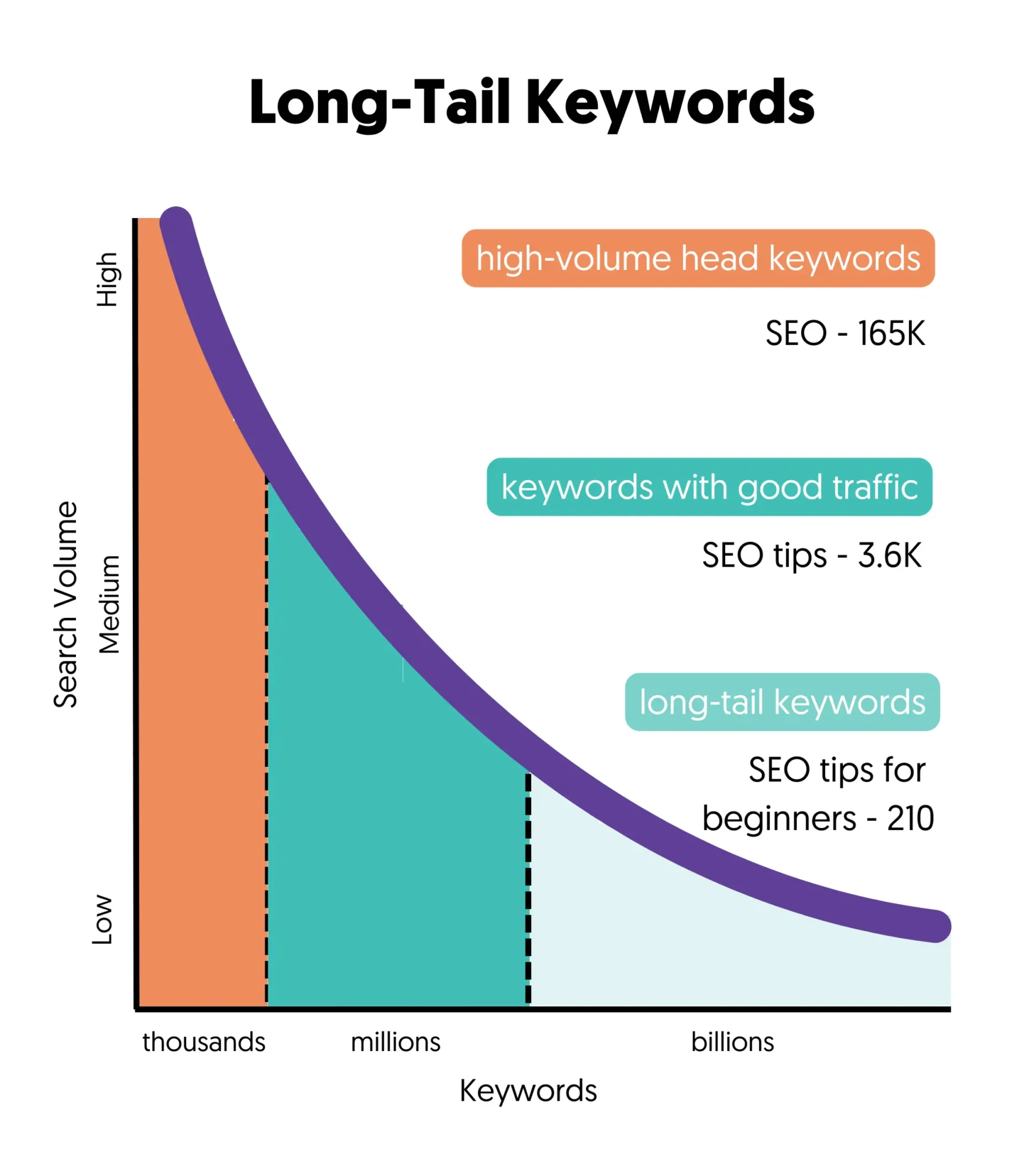
While long-tail keywords may have lower search volumes, they attract more targeted traffic that’s easier to convert. In addition to long-tail keywords, semantic keywords will support your main keyword. They help search engines grasp your content’s meaning. Use tools like Google’s “Related Searches” and add them naturally to boost topical relevance.
21. Stop cannibalizing focus keywords
Keyword cannibalization happens when you use the same keyword across multiple pages. Instead of helping, this causes them to compete against each other in search engine rankings and potentially harms overall SEO performance.
This often leads to confusion for search engines about which page to rank, weakening your visibility. Use tools like Ahrefs or Google Search Console to identify pages targeting the same keywords. If two pages target the same keyword and topic, consider merging them into one stronger, more comprehensive piece.
22. Improve organic CTR using PPC testing
PPC ads are great for testing what works in the search results. Specifically:
- Run A/B tests on headlines: Use Google Ads to test different versions of titles and meta descriptions to see which gets more engagement.
- Apply insights to organic listings: Once you know what ad copy works, update your SEO titles and meta descriptions accordingly.
- Monitor bounce rates: A higher CTR is only useful if users stay. Test how changes affect time on page and bounce rate.
- Use compelling CTAs: Words like “Discover,” “Get,” or “Learn” often perform well. Make your listing feel like the solution to a problem.
This cross-channel strategy helps you fine-tune your organic presence based on real user behavior.
23. Create click-worthy search results
Ranking high isn’t enough if no one clicks your link. That’s why your title and description need to grab attention.
- Write clear, benefit-driven titles: Instead of “SEO Tips,” go for “25 Proven SEO Techniques for 2025 That Actually Work.”
- Keep it within length limits: Aim for 50–60 characters for titles and under 160 characters for meta descriptions to avoid truncation.
- Use numbers and power words: Phrases like “Top,” “Best,” “Ultimate,” and numbers (“Top 10,” “25 Tips”) draw attention.
- Match search intent: Align your copy with what users are looking for, whether that’s answers, comparisons, or solutions.
Click-worthy snippets improve traffic even if your ranking doesn’t change, giving you more ROI from every search.
24. Conduct an SEO audit
An SEO audit is a complete health check for your website. It shows what’s working, what’s broken, and where to improve.
- Crawl your site: Improving crawlability and indexing across your site is a key part of modern SEO strategy. It’s helping search engines find and rank your pages efficiently.
- Check technical SEO: Review your site’s mobile-friendliness, structured data, site speed, and XML sitemaps.
- Review content quality: Look for outdated or thin content, keyword stuffing, and cannibalization.
- Evaluate backlinks: Use Ahrefs to review backlink quality, find new link-building opportunities
Do an audit at least once per quarter. It helps you catch issues early before they hurt your rankings.
25. Build an SEO-focused content strategy
Content strategy focused on SEO provides direction, consistency, and results. Building a content strategy around the top techniques for SEO helps you get more traffic and generate better leads.
- Set clear goals: Define what you want to achieve, such as brand awareness, traffic, leads, or conversions.
- Identify core topics: Choose evergreen themes that align with your business and audience needs.
- Map content to buyer journey: Create different types of content for awareness, consideration, and decision stages.
- Plan a publishing calendar: Stay consistent by planning content production and updates months in advance.
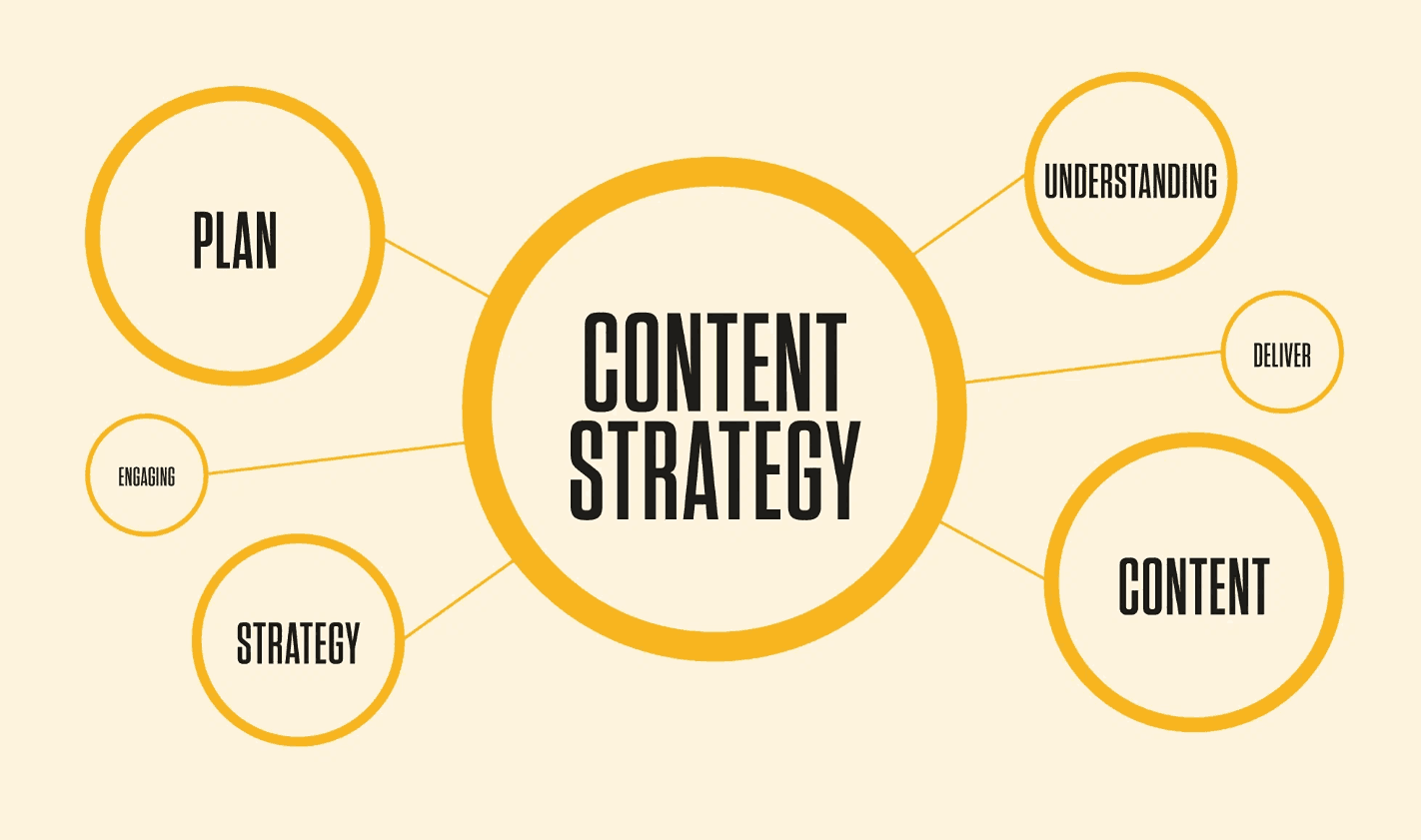
A strong content strategy drives consistent results
While mastering the top SEO techniques is key for boosting your website’s rankings, it’s also essential to optimize your marketing strategy by combining SEO with other methods. SEO and SEM working together can amplify your digital marketing efforts
Conclusion
The top techniques for SEO in 2025 combine smart competitor research, technical fixes, and high-quality content. From technical improvements to content planning, these 25 techniques can push your rankings higher and bring in steady, quality traffic.
At Golden Owl Digital, we use these top techniques for SEO to help our clients rank higher, grow traffic, and improve their online visibility. If you are looking for a unit providing SEO solutions for your website, please contact Golden Owl Digital today to boost your SEO and attract more visitors.







